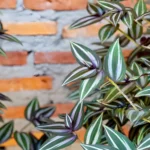Pruning is an essential aspect of maintaining the health, safety, and aesthetic appeal of pine trees in any landscape. While pines are known for their hardiness and low-maintenance needs, strategic pruning can significantly enhance their natural beauty and longevity. This guide offers a comprehensive look into the proper techniques and timings for pruning various types of pine trees, aiming to equip you with the knowledge needed to care for these majestic trees effectively.
Pine Trees
Pine trees, belonging to the genus Pinus, are evergreen conifers known for their long needles and distinctive cones. They vary greatly in size, shape, and species, each with unique growth habits and care requirements. Common species include the Eastern White Pine (Pinus strobus), Scots Pine (Pinus sylvestris), and Ponderosa Pine (Pinus ponderosa), among others. Understanding the specific characteristics and growth patterns of your pine tree is crucial for effective pruning.
The life cycle of a pine tree progresses from seedling to maturity, with the tree’s structure becoming more complex over time. Key parts relevant to pruning include the central leader (the main vertical stem), lateral branches, and candles (new spring growth that extends from the tips of branches). Recognizing these elements is foundational to executing proper pruning techniques.
Preparation for Pruning
The best time to prune pine trees is during their dormant period in late winter to early spring, before new growth begins. This timing reduces stress on the tree and minimizes the risk of attracting pests and diseases that are more active during warmer months. However, dead or damaged branches can and should be removed as soon as they are noticed, regardless of the season.
Before you begin pruning, gather the necessary tools and equipment:
- Hand pruners for small branches
- Loppers for medium branches
- A pruning saw for larger branches
- Safety gear, including gloves and eye protection
Ensuring your tools are sharp and clean is critical to making precise cuts and preventing the spread of disease. Additionally, familiarize yourself with safety considerations, such as wearing appropriate clothing and being mindful of your surroundings, especially when working with tall trees or using ladders.
Pruning Techniques
Pruning pine trees involves several techniques, each serving a specific purpose:
Deadwooding
Deadwooding is the process of removing dead, dying, or diseased branches. This is crucial for the health of the tree, as it helps prevent the spread of decay and disease, and for safety, as dead branches can fall and cause injury or damage.
- Identify Deadwood: Look for branches that lack green needles, are discolored, or show signs of decay.
- Make Clean Cuts: Use the appropriate tool based on the size of the branch. Cut close to the trunk or parent branch, but do not damage the collar (the swelling where the branch meets the trunk), as this is critical for healing.
Structural Pruning
Young pine trees benefit greatly from structural pruning, which helps establish a strong, balanced framework for future growth. This involves selecting a central leader and evenly spaced lateral branches.
- Central Leader Identification: Ensure the tree maintains one dominant central leader to prevent structural weaknesses.
- Branch Selection: Remove competing leaders or branches that grow vertically and could challenge the dominance of the central leader. Prune to maintain evenly spaced lateral branches, encouraging a balanced, symmetrical shape.
Candle Pruning
Candle pruning is a specialized technique used to control the size and shape of pine trees, particularly useful for ornamental pines in landscape settings. “Candles” refer to the new shoots that emerge in spring, resembling candles before they fully open into new branches with needles.
- Timing for Candle Pruning: The best time to prune candles is in late spring, just as they begin to lengthen but before the needles fully expand. This timing allows you to influence the growth pattern without putting undue stress on the tree.
- How to Prune Candles: Using your fingers or a pair of hand pruners, pinch or cut off part of the candle. The amount you remove depends on how much you wish to restrict growth; typically, pruning half the length of the candle is sufficient. Be gentle to avoid damaging the remaining part of the shoot.
- Benefits: Candle pruning helps maintain a compact growth habit, encourages bushier growth by stimulating the development of lateral shoots, and allows for shaping of the pine tree without severe cutting back of established branches.
Selective Thinning
Selective thinning improves the tree’s health and appearance by removing select branches to enhance light penetration and air circulation within the canopy. This technique is particularly important for mature pine trees that have become too dense.
- Identify Branches for Removal: Look for branches that are dead, weak, or rubbing against each other, as well as any that detract from the desired shape of the tree. Also, consider thinning branches that block light or airflow to the interior of the tree.
- Pruning Cuts: Make cuts just outside the branch collar, taking care not to cut into the collar itself. Use the appropriate tool based on the thickness of the branch, ensuring clean cuts to facilitate healing.
- Outcome: Proper selective thinning should maintain the tree’s natural shape and structure, improve its health by reducing the risk of disease, and enhance its aesthetic appeal by allowing more light to reach the inner foliage.
Special Considerations
When pruning pine trees, there are several special considerations to keep in mind:
- Disease Management: Be vigilant for signs of disease or pest infestation. Pruning can help manage certain conditions by removing infected material, but it’s also important not to spread pathogens with your tools. Disinfect your tools between cuts, especially when working on diseased branches.
- Pruning Mature Trees: Mature pine trees generally require less pruning than young trees. Focus on removing deadwood and any branches posing a safety risk. Extensive pruning of large, mature trees is best left to professionals, especially when it involves climbing or the use of power tools.
Aftercare and Maintenance
After pruning your pine tree, taking steps to support its recovery and continued health is crucial:
- Watering: Ensure the tree receives adequate water, especially during dry periods. Deep, infrequent watering is preferable to shallow, frequent watering, as it encourages deeper root growth.
- Mulching: Apply a layer of organic mulch around the base of the tree to help retain soil moisture, regulate soil temperature, and reduce weed competition. Keep the mulch a few inches away from the trunk to prevent moisture buildup and potential rot.
- Monitoring: Keep an eye on the tree in the weeks and months following pruning for signs of stress, disease, or pest activity. Early detection and intervention can prevent minor issues from becoming major problems.
Common Pruning Mistakes to Avoid
Pruning is an essential part of pine tree care, but it’s important to approach it with knowledge and caution. Avoiding common mistakes can prevent harm to your tree and ensure its healthy growth and appearance. Here are several errors to steer clear of:
- Over-Pruning: Removing too much foliage at once can shock the tree, stunting its growth or even leading to death. Never remove more than 20-25% of the tree’s crown in a single year.
- Improper Timing: While dormant season pruning is generally recommended, timing can vary based on your climate and the specific needs of the tree. Pruning at the wrong time can expose the tree to harsh conditions or pests.
- Flush Cuts: Cutting too close to the trunk or parent branch can damage the tree’s natural healing structures. Always cut just outside the branch collar without leaving a stub.
- Topping: Cutting off the top of the tree, or “topping,” can severely damage the tree’s structure and health. It leads to weak new growth and increased vulnerability to pests and diseases.
Aftercare and Maintenance
After pruning your pine tree, proper aftercare is crucial to help the tree heal and continue thriving:
- Watering: Maintain consistent watering, especially in the weeks following pruning. This helps the tree recover and supports new growth.
- Mulching: Apply a 2-3 inch layer of organic mulch around the tree’s base to conserve soil moisture and reduce temperature extremes. Ensure the mulch is not touching the trunk to prevent rot.
- Fertilization: While pine trees typically require minimal fertilization, consider applying a balanced fertilizer if growth seems sluggish or if soil tests indicate nutrient deficiencies. It’s best to fertilize in the late fall or early spring.
- Observation: Regularly inspect your pine tree for signs of stress, such as discolored needles or unusual growth patterns. Early detection of issues allows for timely intervention.
Conclusion
Pruning pine trees is more than just a maintenance task; it’s a way to invest in the health and beauty of your landscape. By understanding the correct techniques, timing, and aftercare, you can ensure your pine trees remain strong, healthy, and visually appealing for years to come. Remember, while DIY pruning is suitable for smaller trees and basic maintenance, it’s wise to consult with or hire a professional arborist for large trees or complex pruning tasks. This ensures the safety of both the tree and the pruner.
Armed with the knowledge from this guide, you’re now equipped to approach pine tree pruning with confidence. Whether you’re shaping young saplings, maintaining mature trees, or rejuvenating neglected specimens, your efforts will contribute to a vibrant and healthy garden ecosystem.



